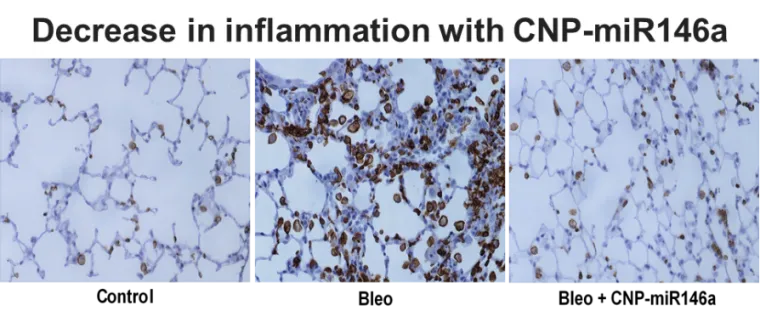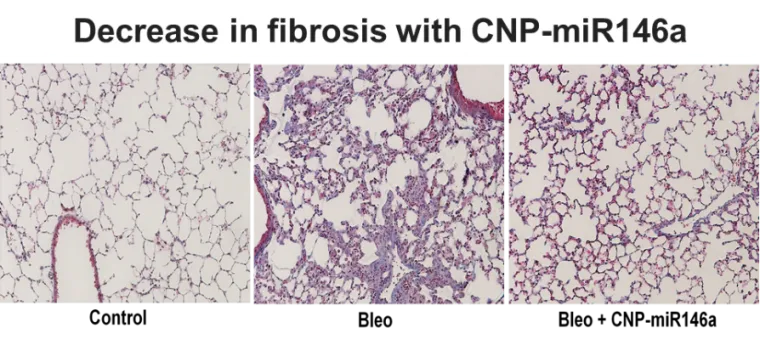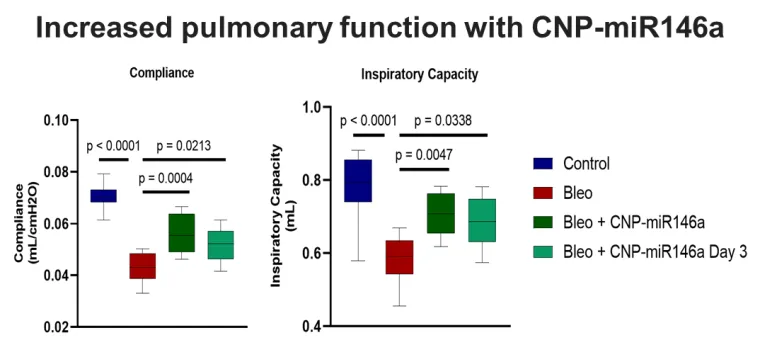The Laboratory for Fetal and Regenerative Biology research is focused primarily in the field of healing, the response to injury, and regenerative medicine, with an emphasis on elucidating the mechanisms involved in the regenerative response to injury in the fetus, the role of stem cells in tissue repair, and the correction of abnormal healing in the adult.
Expand the tabs below to learn more about two of the lab's featured projects.
We have designed a novel cerium oxide nanoparticles (CNPs) that possess ROS scavenging properties and have conjugated them with a miR-146a mimetic, to target both oxidative stress/ROS and pro-inflammatory signaling. Our studies have shown that local treatment of the diabetic wound with CNP-miR146a conjugate resulted in reduced time to wound healing with increased strength and elasticity in a murine model. This was further validated in a porcine model where treatment with CNP-miR146a resulted in reduced time to wound healing.
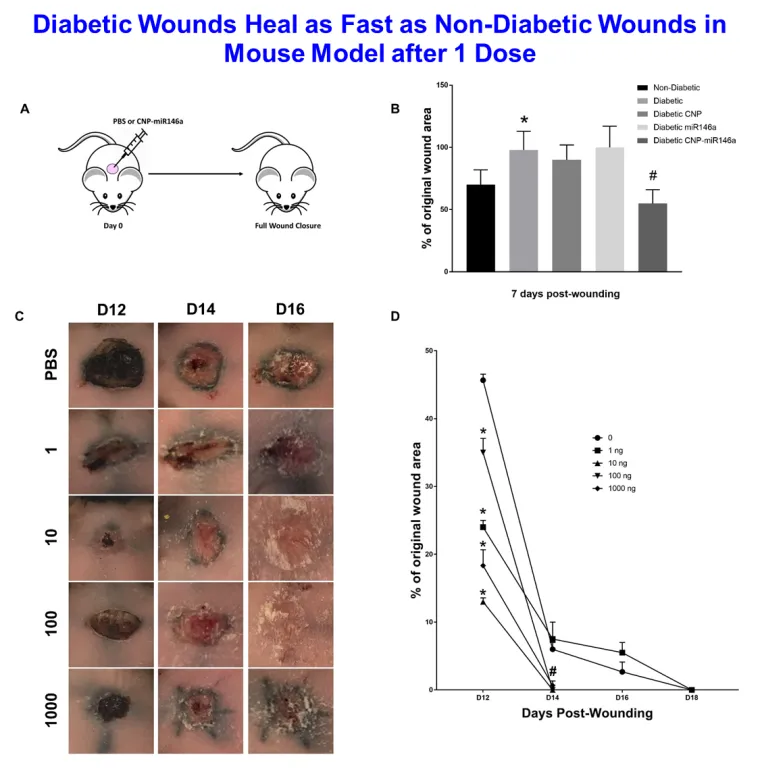
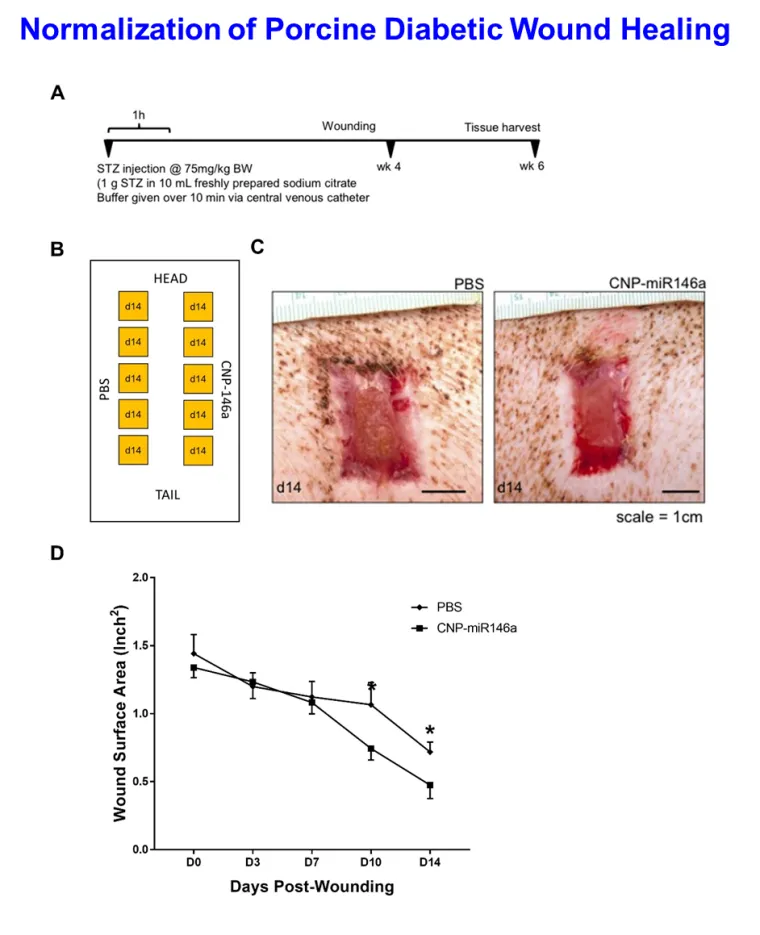
ALI in its most severe form, ARDS, is to date the most life-threatening complication reported from COVID-19. Early data suggest that more than 40% of individuals hospitalized for severe and critical COVID-19 developed ARDS and over 50% of those diagnosed died from the disease. While the etiology of ALI is multifactorial, a central pathogenic feature of the progression to ARDS is a persistent activation of inflammation and oxidative stress. In a bleomycin-induced model of ALI, we found that one-time administration of CNP-miR146a prevents inflammation and fibrosis, and improves pulmonary mechanics.
